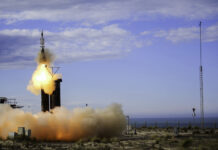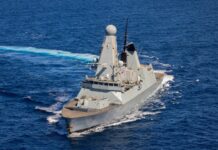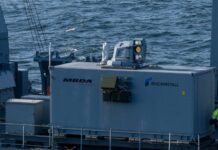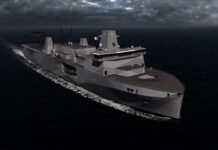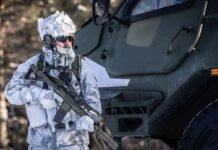European missile house MBDA outlined a range of new weapon developments in the lead-up to London’s DSEI 2025 defence exhibition, taking place from 9 to 12 September.
During an embargoed press briefing at MBDA’s Stevenage site on 29 August, MBDA detailed developments in relation to five systems: the Crossbow One-Way Effector (Heavy), the Akeron MBT 120 gun-launched projectile, the SPEAR Glide munition, the Surface-Launched ASRAAM (Advanced Short Range Air-to-Air Missile), and the Future Cruise/Anti-Ship Weapon (FC/ASW).
The Crossbow One-Way Effector (Heavy), as explained by an MBDA business development executive associated with the programme, has been developed “at a massive pace” and is intended to “deliver affordable strike in the deep”, meaning out to 800 km and beyond, with a payload of up to 300 kg. Designed to operate off GNSS, but with an anti-jam capability, the weapon features an artificial intelligence (AI)-enabled, image-based navigation system.
“That really will make the difference in terms of its ability to operate in those GNSS-denied environments,” said the executive, “so it’s the ability to match satellite imagery or Google Maps-type imagery with its location in terms of the IR [infra-red] camera, so a day and night capability that it will have on board.
“In terms of the target set, we are looking very much at destroying those strategic and tactical, static, high-value targets, so those logistic nodes etc in the deep that are enabling manoeuvre in the tactical space.”
In relation to providing the weapon at pace, the executive explained that MBDA had created an ecosystem of small/medium enterprises and prime contractors from across Europe to maximise military and commercial off-the-shelf capabilities and “deliver mass very quickly”. He added that the paper design of the weapon through to demonstration in the fourth quarter of this year would be seven months, which has “significantly cut down the development time scales that we would ordinarily associate with our high-end capabilities”.
He added that MBDA could move to production at scale in the second quarter of 2026, while also spirally developing the system according to customer requirements, and that weapon could be integrated into a standard 20 ft (6 m) ISO-compliant truck to maximise the weapon’s flexibility of use.

In response to this, the Akeron MBT 120 provides a cost-effective non-line-of-sight missile that, in matching the space dimensions of existing 120 mm tank ammunition, is able to be used by the vast majority of NATO and allied MBTs.
“Therefore, what that can provide is a revolutionary uplifting capability for a very low integration cost and burden,” the MBDA executive noted.
Cued by other battlefield sensors to find the vicinity of its target, the Akeron MBT 120 missile uses a passive electro-optical/infrared (EO/IR) seeker, allowing it to bypass laser-activated defensive air systems and active protection systems.
“Armoured infantry and armour are effectively now self-sufficient,” said the executive. “This increases their combat momentum and their tempo of operations. If they come up against a sticking point … there is no requirement to wait for artillery; there is no need to request air support. This means that tanks can do it themselves and support their infantry to the full extent that is required.”
The Akeron MBT 120 has a top-attack profile that significantly increases its lethality by targeting the weak points of enemy armour not protected by explosive reactive armour, for example. Additionally, as a fire-and forget weapon, the Akeron MBT 120 minimises the cognitive burden on the firing MBT crew and, unlike other gun-fired missiles that are command to line of sight weapons, does not require the firing MBT to remain exposed.

Compared to the SPEAR missile, SPEAR Glide sees the high-end turbojet and fuel system removed and the introduction of a full-calibre kinetic penetrator, while its front end has the SPEAR’s radio frequency (RF) seeker replaced by an EO/IR seeker that facilitates image-based navigation and terminal guidance in a GNSS-denied environment.
The key drivers for the weapon’s development are low cost, the ability to manufacture at a high rate if required, and rapid integration onto carrying platforms as facilitated by its commonality with the form factor of the SPEAR missile.
An MBDA executive briefing on SPEAR Glide noted that, while costs have been minimised by using commercial off-the-shelf components that can be procured quickly, “to then give you the same performance that you would want to expect in a complex weapon we blended that with advanced machine-learned algorithms from our image processing team to give us that high-end weapon performance”. A lot of these algorithms, he noted, have been developed in collaboration with the UK Ministry of Defence’s Defence Science and Technology Laboratory over the last few years.

As the MBDA executive briefing on the system noted, “This is low cost and can be available to the UK and export customers in very short timescales.”
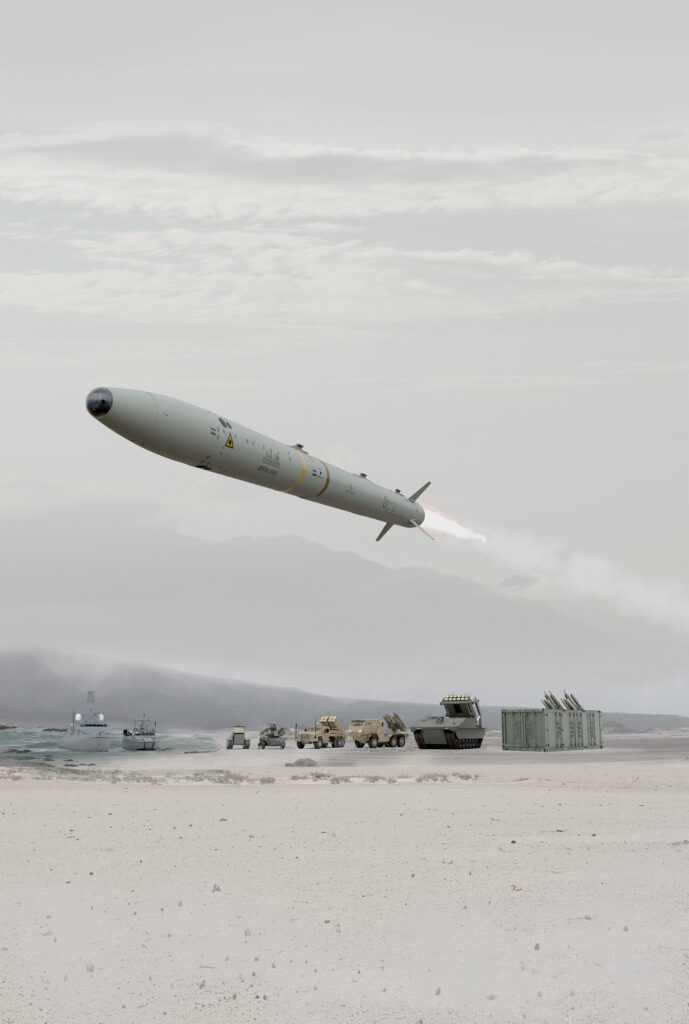
The FC/ASW weapons are designed to be both multi-domain and multi-platform for both the UK and France, with Italy also looking to join the programme.
The key reveal for DSEI 2025 is that MBDA is unveiling the true shape of the stealthy FC/ASW weapon, with a representation of this displayed to the audience at Stevenage. Although at first glance this looked vaguely similar to a Storm Shadow, the MBDA executive noted, “The fact that physics dictates, when you put it on certain platforms and certain launchers, physics will dictate going to look a certain way, when you look into the detail actually you’ll see things are quite substantially different.”
A full-scale model of the weapon is being displayed at DSEI 2025.






